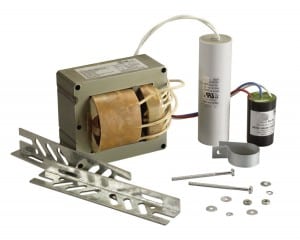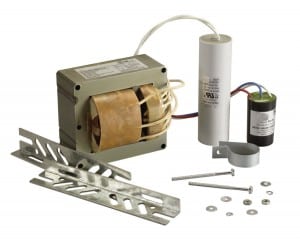Replacing a 175W HPS bulb with a 250W metal halide may lead to light ballast incompatibility and decreased lighting efficiency. The solution is to use the correct ballast for each bulb type.
No, you cannot put a 250W metal halide bulb in there without changing the ballast to match the new bulb’s requirements.
Let’s look at the differences between HPS and metal halide bulbs and their compatibility.
How many lumens is a 250W metal halide?
A 250W metal halide bulb typically produces between 20,000 and 24,000 lumens. This is ideal for applications that require bright, white light, such as warehouses or large outdoor areas. The high lumen output provides excellent illumination with good color rendering, which is why metal halide lamps are often used in situations where clear visibility and accurate color representation are essential.
However, it is important to note that the lumen output of metal halide bulbs tends to degrade over time, typically losing about 20-30% of their brightness throughout their lifespan. Regular maintenance and bulb replacement are necessary to ensure consistent lighting quality.
Are HPS and MH bulbs interchangeable?
HPS (High Pressure Sodium) and MH (Metal Halide) bulbs are not interchangeable because they require different types of ballasts. HPS bulbs use a different electrical setup compared to metal halide bulbs, and their lighting properties differ as well. HPS bulbs provide a warm, yellowish light, while MH bulbs emit a cooler, white light.
If you want to switch from an HPS to an MH bulb, you’ll need to ensure that your ballast is compatible with the new bulb. Using the wrong ballast can lead to inefficient lighting, reduced bulb lifespan, and potential electrical hazards. In some cases, dual-ballast systems can handle both types of bulbs, but these setups are not common.
Can you replace a bulb with a higher wattage bulb?
Replacing a bulb with a higher wattage one is not recommended unless the fixture and ballast are rated for the higher wattage. A 250W metal halide bulb, for example, cannot safely replace a 175W HPS bulb in a system designed for 175W because the higher wattage will draw more power than the system is designed to handle.
This mismatch can cause overheating, damaging both the ballast and the fixture, and may pose a fire hazard. Always check the manufacturer’s guidelines for the wattage capacity of your lighting system to ensure safe and efficient operation.
How many lumens does a 250W metal halide produce?
A 250W metal halide bulb produces between 20,000 and 24,000 lumens. This high lumen output makes metal halide bulbs particularly suitable for outdoor applications, sports arenas, and industrial environments. Metal halide bulbs are known for their bright, white light, which enhances visibility and provides a more natural light compared to other types of bulbs.
The lumen output may decrease over time due to the degradation of the bulb’s internal components. Despite this decline, metal halide bulbs still remain a popular choice for situations requiring strong, directional lighting.
Which is better, metal halide or high-pressure sodium bulbs?
The choice between metal halide and high-pressure sodium (HPS) bulbs depends on the application. Metal halide bulbs are better for environments where accurate color rendering is important, such as retail spaces or sports arenas. They emit a bright, white light that closely mimics natural daylight, making them a popular choice for indoor spaces.
HPS bulbs, on the other hand, are more energy-efficient and have a longer lifespan. They are typically used for street lighting, parking lots, and other outdoor applications because their yellowish light is less important in those settings. If energy savings and long life are priorities, HPS bulbs may be the better choice, but for superior lighting quality, metal halide bulbs are preferred.
How can you tell the difference between HPS and MH lights?
HPS and MH bulbs can be distinguished by their color output and physical characteristics. HPS bulbs emit a warm, yellow-orange light that is often associated with streetlights and outdoor security lights. In contrast, MH bulbs produce a cooler, white or bluish light, making them more suitable for indoor environments where visibility and color accuracy are important.
The internal makeup of the bulbs is different. HPS bulbs contain a mixture of sodium and other gases. MH bulbs use metal halides. That’s why they have the different colors and performance characteristics.



